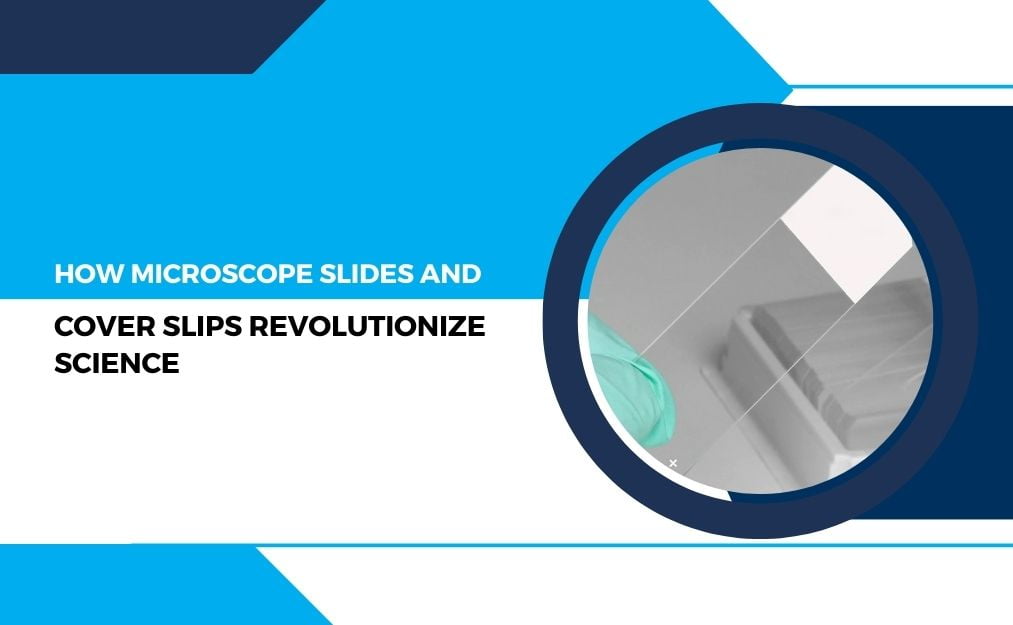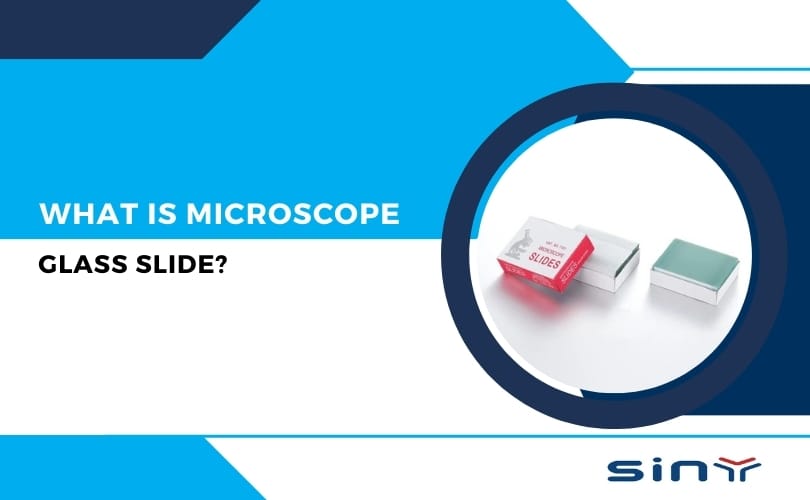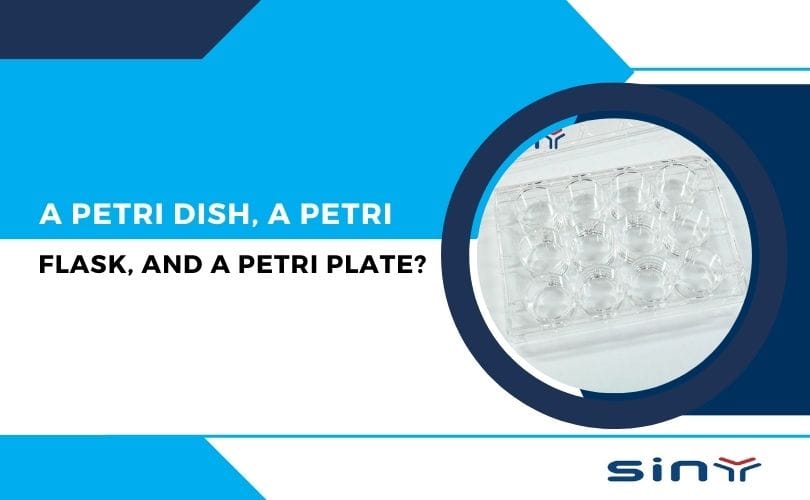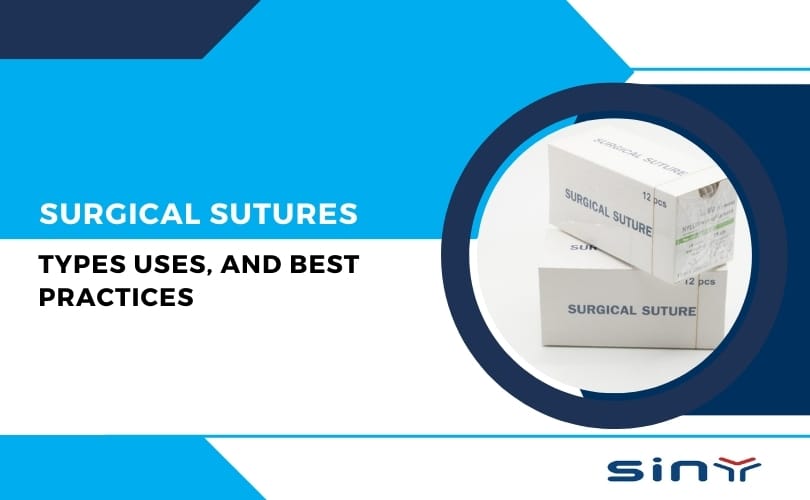Microscope slides and cover slips may seem like humble components, but they play a pivotal role in the realm of microscopy. These unassuming pieces of glass have revolutionized the way we explore the microscopic world. We will delve into the significance of microscope slides and cover slips, their applications, and how they have transformed scientific research.
Microscope slides and cover slips are fundamental tools in the field of microscopy. They provide a stable platform for mounting specimens and allow scientists to observe objects at a microscopic level. These tools are typically made of high-quality glass, providing the optical clarity crucial for accurate observations.
Table of Contents
- 1 Understanding Microscope Slides and Cover Slips
- 2 Basics of Microscope Slides and Cover Slips
- 3 The Evolution of Microscope Slides and Cover Slips
- 4 The Importance of Microscope Slides and Cover Slips in Scientific
- 5 The Art of Preparing Microscope Slides
- 6 The Fascinating World Under the Microscope
- 7 Innovations in Microscope Slides and Cover Slips
- 8 The Evolution of Microscope Slides and Cover Slips
- 9 Conclusion
Understanding Microscope Slides and Cover Slips
Microscope slides and cover slips are fundamental tools in the field of microscopy. They provide a stable platform for mounting specimens and allow scientists to observe objects at a microscopic level. These tools are typically made of high-quality glass, providing optical clarity crucial for accurate observations.
The Role of Microscope Slides
Microscope slides serve as the foundation for mounting specimens. They are usually flat, rectangular pieces of Glass that come in various sizes. Slides are designed to hold the specimen in place and keep it steady during observation. This stability is essential for capturing clear and precise images under the microscope.
Cover Slips: The Protective Shield
Cover slips are smaller, thinner pieces of Glass that are carefully placed on top of the specimen. Their primary function is to protect the specimen from damage and contamination. Cover slips also serve to create a thin, even layer of liquid, such as immersion oil, which enhances the quality of microscopic.
Microscope slides and cover slips—what a fascinating topic to delve into! Let’s dive right in and uncover the basics of these tiny yet mighty tools that have revolutionized the field of science.
Basics of Microscope Slides and Cover Slips
First off, let’s discuss microscope slides. These flat, rectangular pieces of Glass or plastic provide a platform for mounting and examining specimens under a microscope. Think of them as the VIP section where all the action takes place. With their smooth and transparent surface, microscope slides allow scientists to observe the intricate details of biological samples, like cells and tissues, with exceptional clarity.
These thin and transparent pieces of Glass or plastic are like protective shields for microscope slides. They are placed on the specimens to prevent distortion and maintain the sample’s integrity. Coverslips ensure that the observed objects remain flat and undisturbed, making it easier for scientists to study and analyze them.
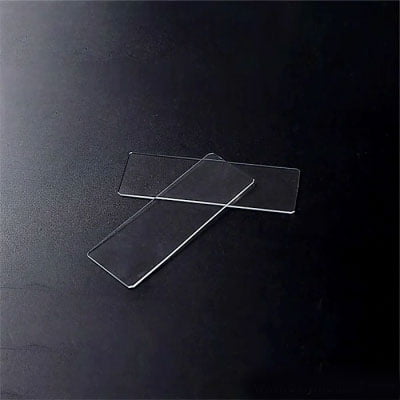
Now that we have the basics covered let’s explore the evolution of microscope slides and cover slips. Glass was the go-to material for manufacturing these essential tools. However, with technological advancements, plastic slides and cover slips have entered the scene. They offer convenience and durability without compromising on image quality. It’s like upgrading from a standard-definition TV to a high-definition one – everything becomes crisper and more vibrant.
They provide a stable platform for scientists to examine and document their findings. Whether studying a newly discovered species’ characteristics or investigating a particular drug’s impact on cells, these tools play a crucial role in advancing scientific knowledge. In essence, microscope slides and cover slips are the unsung heroes enabling breakthroughs in various fields, from medicine to environmental science.
The art of preparing microscope slides. It’s more challenging than slapping a sample onto the slide and calling it a day. There’s a precise method to ensure that the model is properly mounted and secured. It requires precision and a steady hand, from cleaning the slides and cover slips to delicately placing the model and adding a mounting medium.
The Evolution of Microscope Slides and Cover Slips
The humble microscope slide and cover slip. These tiny pieces of Glass have come a long way since their inception. Back then, scientists would painstakingly prepare their slides, cutting tissue sections and placing them on plain glass slides. Oh, the horror of dust particles ruining their hard work!
But fear not, dear scientists, for these slides saw some impressive advancements as time went on. Enter the era of frosted slides. No more guesswork, as the frosted end of the drop made it clear which side was up. What a relief! And let’s remember the coverslips, those transparent protectors that shielded our precious samples from smudges and sneezes.
Microscope slides became canvasses for art. Researchers started using colored slides to enhance the visibility of their specimens. Who doesn’t want to see a vibrant blue cell or a striking orange bacterium?
As technology advanced, microscope slides and cover slips became more specialized. We now have slides with grids for precise measurements, slides with adhesive surfaces to keep samples in place, and even slides with built-in microfluidic channels for studying fluid dynamics.
A microscope, take a moment to appreciate the evolution of these slides and cover slips. They may be small, but they’ve greatly impacted scientific research.
The Importance of Microscope Slides and Cover Slips in Scientific
Microscope slides and cover slips, those unsung heroes of the scientific world! These tiny pieces of Glass may seem inconspicuous, but they are important. In scientific research, microscope slides and cover slips are crucial in unlocking the universe’s secrets. So, let’s dive into the exhilarating world of microscopic wonders and explore the significance of these unassuming pieces of Glass.
When it comes to scientific research, accuracy is key. Microscope slides provide a stable and flat surface for scientists to observe samples under a microscope. Think of them as the sturdy foundation upon which groundbreaking discoveries are made. Not only do these slides hold the models in place, but they also ensure that the specimens remain intact and undisturbed throughout the observation process.
Coverslips, on the other hand, act as protective shields for the samples. They are placed on the specimen, creating a protective barrier that guards against external contaminants. Without coverslips, the samples could easily be contaminated by unwanted particles, compromising the integrity of the research. It’s like trying to solve a crossword puzzle with random ink blots scattered all over the paper—frustrating and inaccurate.
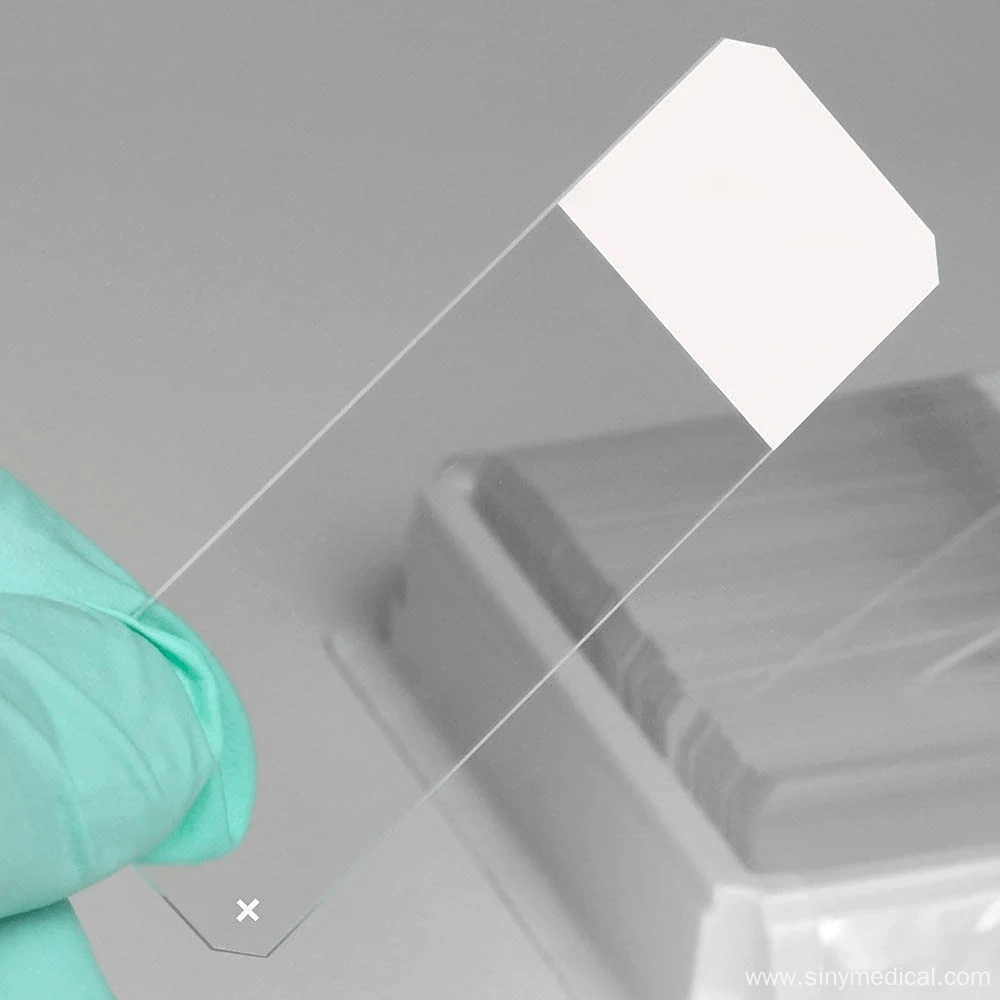
But why stop at accuracy when we can unleash our curiosity to explore the microscopic wonders of the world? With microscope slides and cover slips, scientists can venture into a whole new universe—usually invisible to the naked eye. From observing living organisms in their natural habitat to uncovering the hidden patterns of cells, these glass superheroes make it possible to delve deep into the intricate workings of life itself.
Microscope slides and cover slips have come a long way since their inception. Innovations have revolutionized their design, making them even more user-friendly and efficient. From pre-cleaned and sterilized options to slides with specialized coatings for specific research needs, these advancements have made scientific research more accessible and reliable. It’s like upgrading from a clunky old car to a sleek, high-tech vehicle equipped with all the latest gadgets—a game-changer.
In a nutshell, microscope slides and cover slips aren’t just pieces of Glass; they are gateways to a microscopic world full of awe-inspiring discoveries. By providing stability, protection, and access to the tiniest of details, these unsung heroes play a significant role in shaping the course of scientific research. So, the next time you peer through a microscope, take a moment to appreciate the humble microscope slide and cover slip for their invaluable contributions to science.
The Art of Preparing Microscope Slides
The Art of Preparing Microscope Slides. It’s like being a magician, except instead of pulling rabbits out of hats, you’re preparing slides that reveal the hidden secrets of the microscopic world. So grab your lab coat, and let’s dive into the enchanting realm of microscope slides and cover slips!
Microscope slides, those thin, flat pieces of glass—are the stars of the show. They provide a sturdy surface for mounting your microscopic specimens, allowing you to examine them under the lens of a microscope. And then we have the humble cover slips, those small squares of Glass that sit delicately on top of your specimen, protecting it from outside contaminants while still allowing you to get a clear view.
Now, preparing a microscope slide is not just a haphazard affair. You need to make sure your specimen is properly placed on the slide, using techniques such as smear, squash, or staining to ensure visibility. It’s like being a microscopic artist, carefully arranging the elements of your masterpiece.
But wait, there’s more! Before you can even think about placing your specimen on the slide, you need to clean it. Yes, cleanliness is next to godliness in the world of microscopy. Any dust or debris on your slide could ruin your observations, so be sure to give it a thorough cleaning with a lint-free cloth or some alcohol before getting started.
Whether it’s a piece of onion skin, a drop of pond water, or a slice of brain tissue (don’t worry, no brains were harmed in the making of this blog), delicately place it on the slide using a pipette or a fine needle. And don’t forget to add a drop of mounting medium or a cover slip to protect your specimen from drying out or smudging.
The world that unfolds before your eyes is a mesmerizing display of intricate details and hidden wonders. You might just discover a whole new universe within a single drop of water or a fragment of a leaf.
The Art of Preparing Microscope Slides. It’s a magical journey that combines science with creativity, allowing us to explore the hidden beauty of the microscopic world.
The Fascinating World Under the Microscope
These tiny pieces of Glass may seem insignificant, but they are crucial in scientific research. They provide a platform for scientists to observe and study minute objects, from cells to microorganisms. We have access to this captivating hidden world with microscope slides and cover slips.
What makes this world so intriguing is the sheer diversity it offers. With the right specimen and magnification, you can witness many wonders. Imagine observing the intricate patterns on a butterfly’s wing or marveling at the elegant geometry of a snowflake.
Microscope slides and cover slips have also undergone their evolution
Once, they were simply smooth pieces of Glass. They come in various sizes and special coatings to enhance imaging and prevent sample contamination. These advancements have revolutionized scientific research, allowing for more precise observations and groundbreaking discoveries.
Preparing microscope slides is an art in itself. It requires careful handling of specimens, ensuring they are properly mounted and protected. Each step is like a delicate dance, with scientists taking meticulous care to create a clear and concise view through the microscope lens.
With continuous innovations in technology, microscope slides and cover slips have become even more versatile. From specialized coatings to improve cell adhesion to innovative designs for fluidic experiments, scientists have various options to suit their specific research needs. These advancements enhance the quality of data and improve the efficiency of investigations.
Innovations in Microscope Slides and Cover Slips
Microscope slides and cover slips have come a long way since they were first used in scientific research. The need to closely examine specimens under a microscope gave birth to these tiny heroes of science. From the early days of using plain glass slides to modern innovations, these humble tools have revolutionized how we understand the microscopic world.
Another area of innovation is the surface treatment of slides, which aids in the adherence of specimens and prevents them from floating away during observation. Various coatings, like agarose, poly-L-lysine, and poly-D-lysine, have been developed to cater to different research needs. These coatings ensure that researchers get clear and accurate results without sample loss.
There have been advancements in the design of cover slips. Introducing high-tech cover slips with built-in grids and grids engraved on the bottom surface has greatly improved cell counting and tracking in biological studies. These grids make it easier for researchers to analyze and compare cells with precision, saving time and effort.
Innovations in microscope slides and cover slips have revolutionized how scientists conduct their research. These tools have made microscopic investigations more efficient and accurate, from plastic slides to advanced coatings and grid-based cover slips. So, the next time you marvel at the wonders of the tiny world, remember that microscope slides and cover slips played a vital role in uncovering those secrets.
The Evolution of Microscope Slides and Cover Slips
Microscope slides and cover slips have come a long way since their inception. Early versions were simple pieces of Glass, but today, they are manufactured with precision and advanced materials. Modern slides and cover slips are designed to minimize distortion and improve optical performance, pushing the boundaries of scientific exploration.
Conclusion
Of science, even the smallest components can lead to significant breakthroughs. Microscope slides and cover slips may be unassuming, but they are indispensable tools that have revolutionized scientific research. From biology to geology, medicine to material science, thenaturaling pieces, Glass has been vital in expanding our understanding of the microscopic world.


